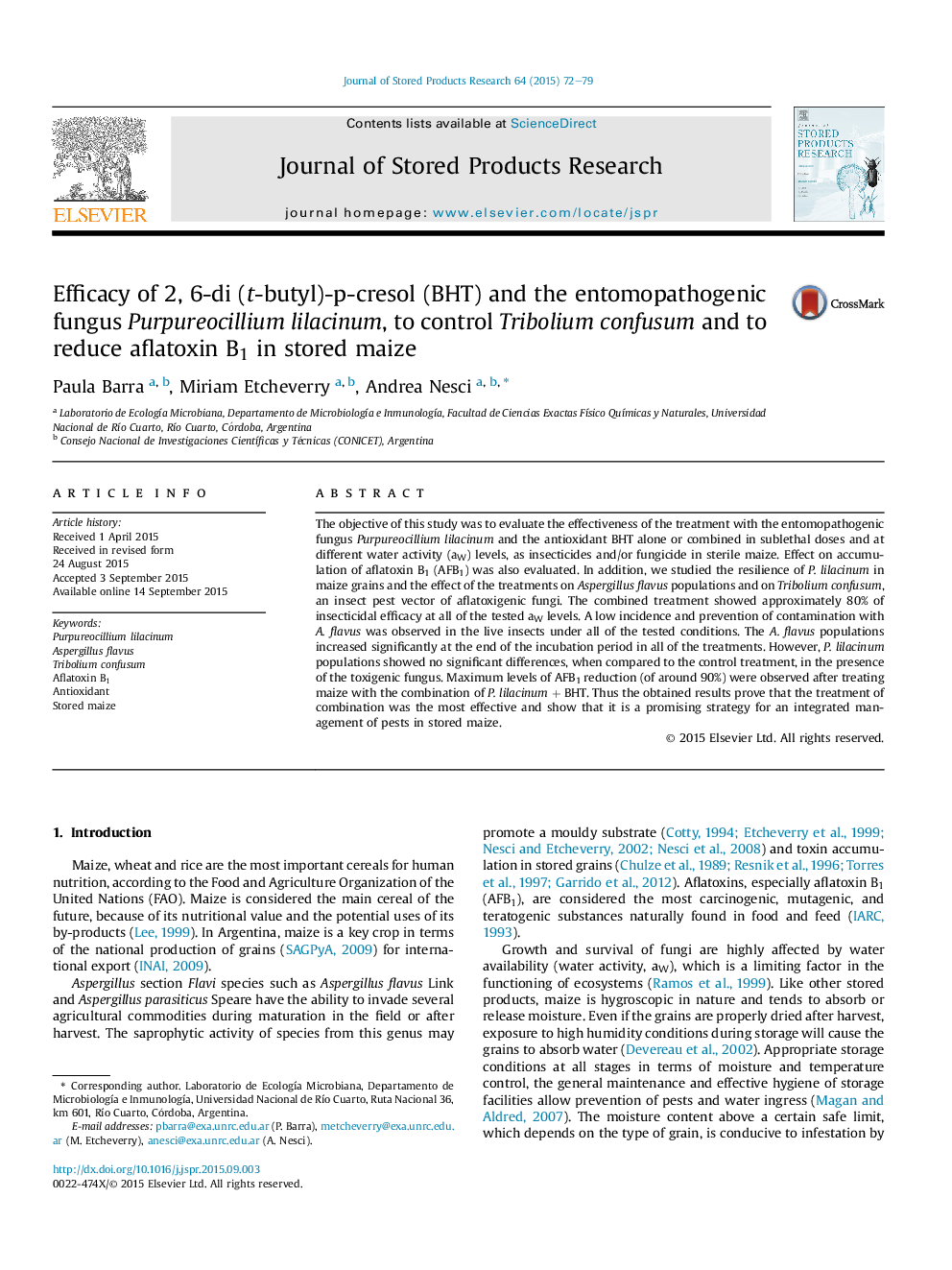| Article ID | Journal | Published Year | Pages | File Type |
|---|---|---|---|---|
| 4516947 | Journal of Stored Products Research | 2015 | 8 Pages |
•Purpureocillium lilacinum ability to maintain the inoculum in maize grains was analized.•Insecticidal effect of combined treatment against Tribolium confusum was evaluted.•Their effect on AFB1 accumulation was evaluated.•P. lilacinum maintained the spore viability in the maize agroecosystem.•P. lilacinum + BHT was the most effective treatment as an insecticide on insect vectors. In addition reducing levels of AFB1.
The objective of this study was to evaluate the effectiveness of the treatment with the entomopathogenic fungus Purpureocillium lilacinum and the antioxidant BHT alone or combined in sublethal doses and at different water activity (aW) levels, as insecticides and/or fungicide in sterile maize. Effect on accumulation of aflatoxin B1 (AFB1) was also evaluated. In addition, we studied the resilience of P. lilacinum in maize grains and the effect of the treatments on Aspergillus flavus populations and on Tribolium confusum, an insect pest vector of aflatoxigenic fungi. The combined treatment showed approximately 80% of insecticidal efficacy at all of the tested aW levels. A low incidence and prevention of contamination with A. flavus was observed in the live insects under all of the tested conditions. The A. flavus populations increased significantly at the end of the incubation period in all of the treatments. However, P. lilacinum populations showed no significant differences, when compared to the control treatment, in the presence of the toxigenic fungus. Maximum levels of AFB1 reduction (of around 90%) were observed after treating maize with the combination of P. lilacinum + BHT. Thus the obtained results prove that the treatment of combination was the most effective and show that it is a promising strategy for an integrated management of pests in stored maize.
